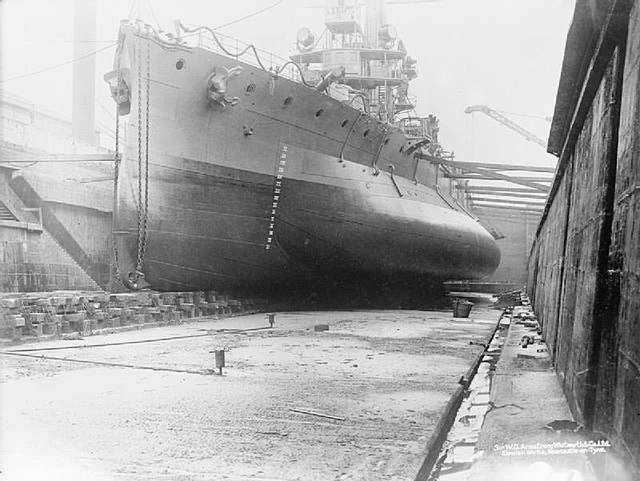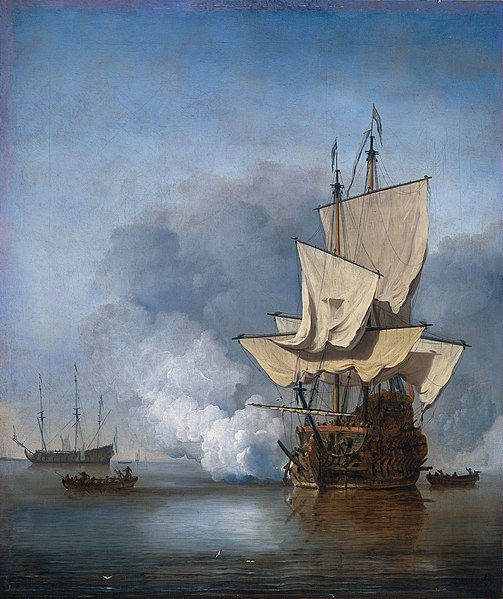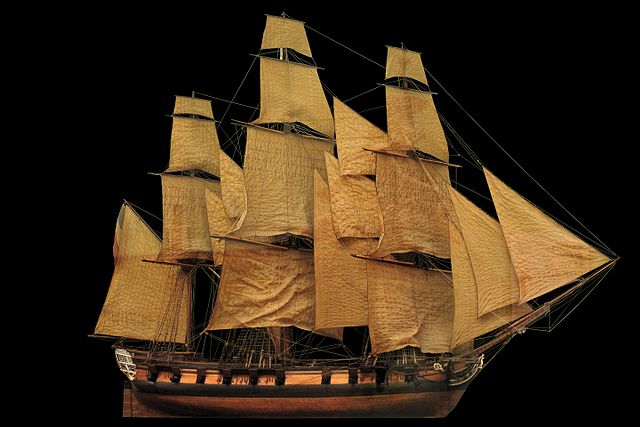Naval armor refers to the various protections schemes employed by warships. The first ironclad warship was created in 1859, and the pace of armour advancement accelerated quickly thereafter. The emergence of battleships around the turn of the 20th century saw ships become increasingly large and well armoured. Vast quantities of heavily armoured ships were used during the World Wars, and were crucial in the outcome. The emergence of guided missiles in the last part of the 20th century has greatly reduced the utility of armor, and most modern warships are now only lightly armored.
Illustration of turtle ship based on a ship that existed in 1795 and that was believed to be similar to the variants constructed in the 1590s.
HMS Warrior during her third commission between 1867 and 1871
Sloped armour on the front of Soviet T-54 tank, here cut open to demonstrate the increase in effective thickness.
HMS Glatton in drydock, circa 1914–1918, showing its anti-torpedo bulge
A warship or combatant ship is a ship that is built and primarily intended for naval warfare. Usually they belong to the armed forces of a nation. As well as being armed, warships are designed to withstand damage and are typically faster and more maneuverable than merchant ships. Unlike a merchant ship, which carries cargo, a warship typically carries only weapons, ammunition and supplies for its crew. Warships usually belong to a navy, though they have also been operated by individuals, cooperatives and corporations.
The Cannon Shot (1670) by Willem van de Velde the Younger, showing a late Dutch 17th-century ship of the line
Assyrian warship, a bireme with pointed bow circa 700 BC
Diagrams of first and third rate warships, England, 1728
A sailing corvette scale model in the Trianon model collection








